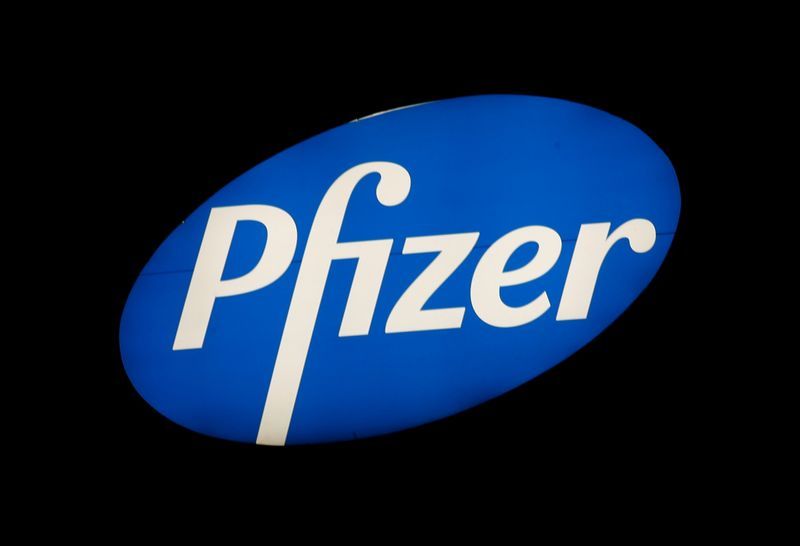- Ariel H.
- Thursday, October 14, 2021
A year later since COVID-19 made an unwelcomed entrance, we finally have some hope!
Updated October 14, 2021, at 10:40 a.m.
 A Reflection
A Reflection
In March 2020 COVID-19 almost knocked the world completely off the grid, but because of our resilience as a civilization we banded together and endured. A year later, life as we once knew it has a new pair of lenses, and we are still pressing forward.
The future is bright despite having to maintain suggested daily preventative measures, such as: wearing masks, socially distancing, and avoiding crowds. It is not within our human nature to go extended periods of time not socially engaging with other humans.
A lot of us haven't had the pleasure to see a lot of our loved ones in person, or at all, due to the virus and the risks that come with it, and sadly some of us have lost loved ones during these times as well.
But there is hope! The year 2021 brings in an un-welcomed anniversary, but it also brings in a wave of readily available vaccines. As of October 2021, there are three vaccines readily available (Johnson & Johnson, Moderna and Pfizer-BioNTech) with Pfizer-BioNTech being the first vaccine to be approved by the Food & Drug Administration (FDA).
History of the vaccines, and How they work
In the Beginning
Vaccines have a long history within our society starting around 1000 CE during the smallpox era before the first ever vaccine was created. It started with Chinese Inoculation which led to the first laboratory vaccine created by Louis Pastuer in 1879. He created the vaccine for chicken cholera (Pasteurella multocida). Click here to learn about the vaccine's timeline. For a more in-depth experience, here is an infographic by SCMP walking you through some of the more familiar types of coronavirus diseases, how they spread, and affect the human body.
Ted-Ed: How do vaccines work? (TIME: 4:35)
Now
We continue to learn and understand how Sars-Cov-2 (Coronavirus disease or COVID-19) works. The vaccines we currently have access to are known to be some of the fastest vaccines created to date, a title previously held by the Mumps vaccine which took 4-years. On average a typical vaccine does take about 10-15 years to be thoroughly tested, approved, and licensed. However, due to the quick spread of the Coronavirus unprecedented measures were taken to help expedite a vaccine by the Department of Health & Human Services (HHS) and the OWS (Operation Warp Speed) program was created. There are a lot of resources out there, and you'll find many of them listed below to help you continue your research and grow your understanding on the virus and the vaccinations. This will further help answer questions on what the vaccines are and what they do.
Before we have the chance to use a vaccine, it must go through 7-steps:
1. Research & Discovery
2. Pre-Clinical
3. Phase 1
4. Phase 2
5. Phase 3
6. BLA (Biologics License Application) Submitted to FDA (U.S. Food and Drug Administration)
7. Phase 4) to receive government approval.
Even after it receives approval vaccines have to be monitored regularly for further improvements. Follow this link to further understand the typical vaccine developmental process that is expected by the FDA for true vaccine safety and effectiveness.
Please note: Laboratories are still in the developmental stages for vaccines for children. To see what the process looks like click here and to further understand what the approval process looks like, click here.
COVID-19 Vaccines
(To be noted: The vaccines are recommended for people aged 16 years and older)
Benefits of getting vaccinated.
Johnson & Johnson's Janssen
- Manufacturer: Janssen Pharmaceuticals Companies of Johnson & Johnson
- Type of Vaccine: Viral Vector
- Number of Shots: 1 shot
- How Given: Shot in the muscle of the upper arm
- Does Not Contain: Eggs, latex, or preservatives
- Side Effects
Moderna 
- Manufacturer: ModernaTX, Inc.
- Type of Vaccine: mRNA
- Number of Shots: 2 shots, 21 days apart
- How Given: Shot in the muscle of the upper arm
- Does Not Contain: Eggs, latex, or preservatives
- Side Effects
Pfizer-BioNTech ***
- Manufacturer: Pfizer, Inc., and BioNTech
- Type of Vaccine: mRNA
- Number of Shots: 2 Shot, 21 days apart
- How Given: Shot in the Muscle of the Upper Arm
- Does Not Contain: Eggs, Latex, and Preservatives
- Side Effects
(***FDA Approved, August 2021)
Vaccination Health Checker/Safety Monitoring Systems
Congratulations, you're fully vaccinated! Click here for how to protect yourself and others. Also listed are safety monitoring systems you can use to keep track of your symptoms. The goal is to keep you safe and those around you safe during this season of Covid-19.
V-SAFE
- It's a smartphone-based tool that uses text messaging & web surveys to provide personalized health check-ins after you receive a COVID-19 vaccination. Your participation makes a huge difference. You can quickly tell the CDC (Center for Disease Control) if you're having any side effects after getting the vaccine, and depending on your answers someone may call from the CDC to check in on you.
- Click Here to learn how to participate and to download the app.
- To register for V-SAFE, click here.
- FAQs about V-SAFE, click here.
VAERS (Vaccine Adverse Event Reporting System)
- This is a national system that collects reports of adverse events that happen after the vaccination
- For additional information about VAERS, click here; or call 1-800-822-7967
- To submit a VAERS Report Online, click here.
- To download a writable report in PDF file and to up-load it, click here.
List of additional Safety Monitoring Systems
General Public
- NHSN - National Healthcare Safety Network
- VSD - Vaccine Safety Datalink
- CISA - Clinical Immunization Safety Assessment Project
- BEST - Biologics Effectiveness & Safety System
- Sentinel Initiative
Members of Military
- DOD - Department of Defense
- VAERS Vaccine Adverse Event Reporting System data
- VAECS - Vaccine Adverse Event Clinical System
- Electronic Health Record & Defense Medical Surveillance System
Veterans
- VA ADERS - Veterans Affairs Adverse Drug Reporting System
- VA Electronic Health Record and Active Surveillance System
Tribal nations
- IHS VAERS data - Indian Health Service Vaccine Adverse Event Reporting System data
Additional Resources
Vaccine Appointment
- VaccineFinder
- Getting a COVID-19 Vaccine
Immunization
- Take this assessment to find out what vaccines you are missing.
- Adult Resources & Immunization Schedule
- How to Locate Vaccination Records
- K-12 School Operational Strategy
- Health Care Providers
- Principles of Vaccination
Government Websites
- CDC - Centers for Disease Control & Prevention
- SC-DHEC - South Carolina Department of Health & Environmental Control
- White House
- IRS Stimulus Payment Updates
- USA.GOV
- NVICP - National Vaccine Injury Compensation Program
- FDA - United States Food and Drug Administration
Scientific Terms
- Inoculation (or Variolation): the process of producing immunity and a method of vaccination that consists of the introduction of the infectious agent onto an abraded or absorptive skin surface, instead of inserting the substance in the tissues by means of a hollow needle, as in injection.
- 3-types of COVID-19 Vaccines :
- mRNA vaccines contain material from the virus that causes COVID-19 that gives our cells instructions on for how to make a harmless protein that is unique to the virus. After our cells make copies of the protein, they destroy the genetic material from the vaccine. Our bodies recognize that the protein should not be there and build T-lymphocytes and B-lymphocytes that will remember how to fight the virus that causes COVID-19 if we are infected in the future.
- Protein subunit vaccines include harmless pieces (proteins) of the virus that causes COVID-19 instead of the entire germ. Once vaccinated, our bodies recognize that the protein should not be there and build T-lymphocytes and antibodies that will remember how to fight the virus that causes COVID-19 if we are infected in the future.
- Vector vaccines contain a modified version of a different virus than the one that causes COVID-19. Inside the shell of the modified virus, there is material from the virus that causes COVID-19. This is called a “viral vector.” Once the viral vector is inside our cells, the genetic material gives cells instructions to make a protein that is unique to the virus that causes COVID-19. Using these instructions, our cells make copies of the protein. This prompts our bodies to build T-lymphocytes and B-lymphocytes that will remember how to fight that virus if we are infected in the future.
- 3-types of White Blood cells that fight infection :
- Macrophages are white blood cells that swallow up and digest germs and dead or dying cells. The macrophages leave behind parts of the invading germs, called “antigens.” The body identifies antigens as dangerous and stimulates antibodies to attack them.
- B-lymphocytes are defensive white blood cells. They produce antibodies that attack the pieces of the virus left behind by the macrophages.
- T-lymphocytes are another type of defensive white blood cell. They attack cells in the body that have already been infected.
With the Coronavirus (COVID-19) currently impacting the U.S., we have compiled a list of resources and information to help you and your family stay informed. Need assistance registering for the vaccine? Call our trained staff at 803-799-9084 for assistance, Monday - Fridays from 9 a.m. - 4 p.m.
For more information about receiving the COVID-19 vaccine in South Carolina, click here. For additional COVID-19 resources and information, click here.



